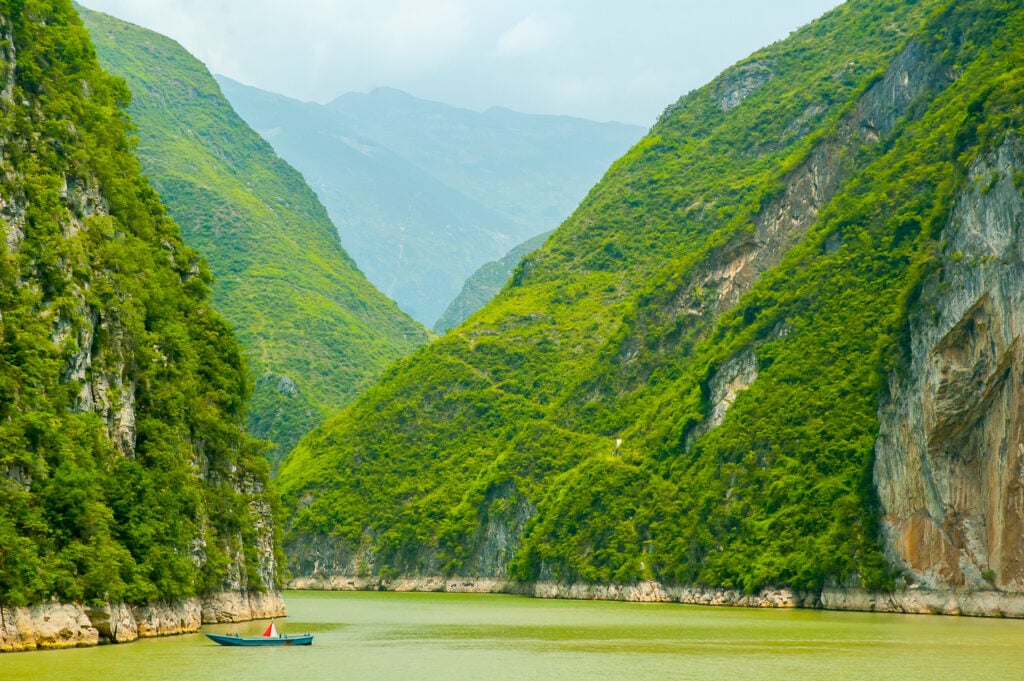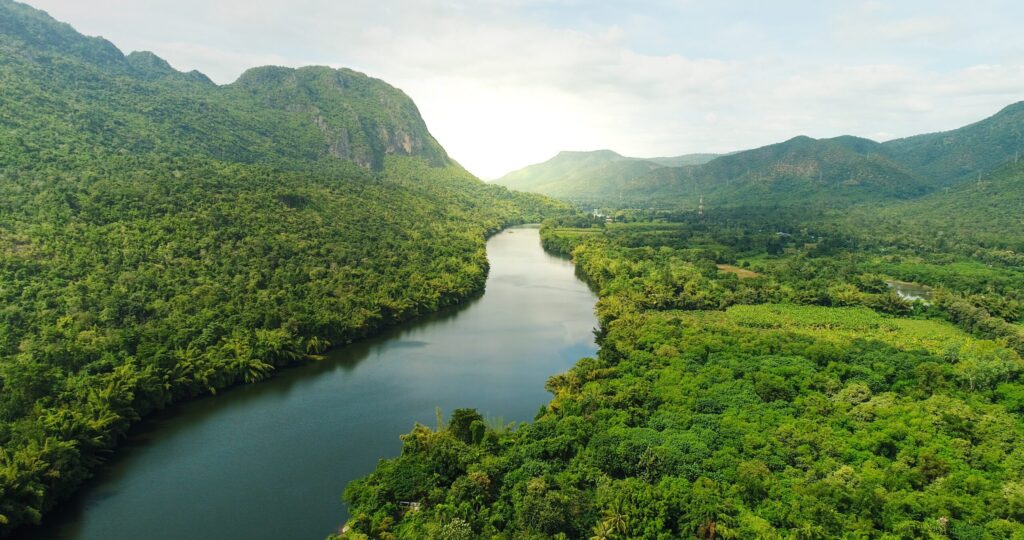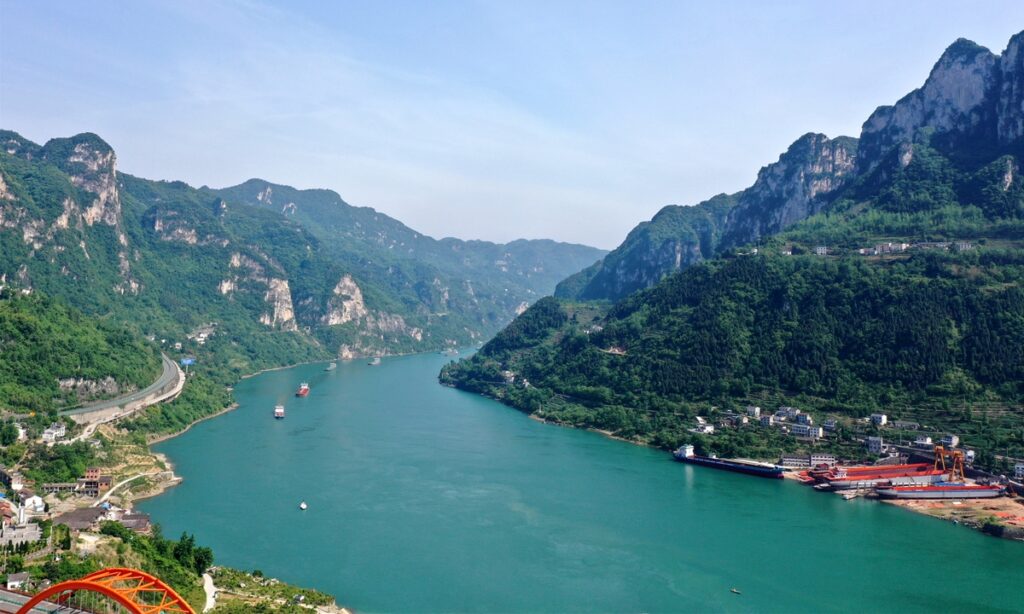When thinking of vast and powerful rivers, many of us picture the Nile or the Amazon, but Asia boasts its own titanic waterways. The question often arises: Which is Asia’s largest river? The answer is more than just geographical; it’s about understanding the size, history, and influence of these great rivers on the culture, economy, and environment of the continent.
Asia’s largest river, the Yangtze River, stretches across China and is the longest river in the continent, but it also holds a deep cultural and economic significance. This blog will explore the Yangtze River in detail, from its geographical statistics to its historical and cultural importance, as well as its role in modern-day China.
Understanding Asia’s Largest River

Asia’s largest river, the Yangtze, is the lifeblood of millions of people who depend on its waters for transportation, agriculture, and daily living. With its vast length, the Yangtze is the longest river in Asia and the third-longest in the world, stretching over 6,300 kilometers (3,917 miles).
What Makes the Yangtze River Asia’s Largest?
The Yangtze River spans 11 provinces in China, flowing from the Tibetan Plateau in the west to the East China Sea in the east. Its sheer size, the river basin it covers, and its vital role in the region’s development contribute to its status as the largest river in Asia.
Key facts about the Yangtze River include:
- Length: 6,300 kilometers (3,917 miles)
- Drainage Basin: Covers approximately 1.8 million square kilometers.
- Discharge: 30,000 cubic meters per second, making it the most powerful river in Asia in terms of discharge.
The Yangtze is not just the longest river in Asia; it is also a major water source for China’s agriculture and industry. Its basin accounts for around 20% of the country’s total land area and supports over 400 million people.
Historical Significance of the Yangtze River
The Yangtze River has played a pivotal role in the development of Chinese civilization for over 3,000 years. Early Chinese dynasties, including the Zhou and Han, settled along its banks, establishing powerful kingdoms that relied on the fertile lands around the river for agriculture. This river became the heart of trade, culture, and development for ancient China.
In addition to its role in agriculture, the Yangtze was a major conduit for transportation, particularly before the advent of modern infrastructure like highways and railroads. It helped link central China with the eastern coastal regions, facilitating the movement of goods, culture, and people.
The Yangtze in Modern Times
In the present day, the Yangtze River is not just an ancient symbol of life in China but a central feature of its modern economy. Several key cities are situated along its banks, including Shanghai, Chongqing, Nanjing, and Wuhan. The river serves as a major highway for trade, and its ports handle a large portion of China’s cargo exports.
One of the most iconic projects along the Yangtze is the Three Gorges Dam, the world’s largest hydropower station by installed capacity. The dam has had significant environmental and social impacts, including the displacement of over 1 million people and changes to the local ecosystem. However, it plays an important role in flood control and energy production for China.
The Environmental Impact of the Yangtze River
The Yangtze River has also been at the center of environmental concerns. Over the years, pollution from industrial activity, agricultural runoff, and urbanization has severely impacted the water quality of the river. Several efforts have been made to restore its health, including stricter regulations on industrial waste and the promotion of sustainable agricultural practices.
Additionally, the Yangtze River has faced challenges due to climate change, leading to fluctuating water levels and more frequent flooding. These issues have prompted significant conservation efforts to protect its biodiversity and ensure a sustainable future for the millions of people who rely on the river.
The Cultural Influence of the Yangtze River
The Yangtze River is deeply embedded in Chinese culture and has been celebrated in poetry, art, and folklore for centuries. Its grand scenery has inspired countless poets, including famous figures from the Tang and Song dynasties. Even today, the river is a symbol of China’s vastness, history, and enduring spirit.
The river also holds significant cultural and spiritual meaning. Several important temples and shrines line its banks, and the river is associated with several Chinese legends and traditions. One of the most famous stories is the Legend of the White Snake, which has been passed down through generations and is often retold in literature and theatre.
Comparisons with Other Large Rivers in Asia
While the Yangtze holds the title of the largest river in Asia, there are other significant rivers that also have an immense impact on the continent.
- The Mekong River flows through several Southeast Asian countries, including Cambodia, Laos, Thailand, and Vietnam. It is the 12th longest river in the world and provides water for millions of people in this densely populated region.
- The Ganges River is sacred to Hindus and plays a major role in India’s spiritual and cultural life. It flows for over 2,500 kilometers through India and Bangladesh and is essential to the lives of millions.
Each of these rivers is vital to the countries they pass through, providing resources, transportation, and cultural heritage.
Key Takeaways: Which is Asia’s Largest River?

To summarize, the Yangtze River stands as Asia’s largest river, not only in terms of length but also in the significant impact it has on the environment, economy, and culture of China and the surrounding regions. From ancient history to modern economic importance, the Yangtze continues to be a symbol of China’s growth and challenges.
List of rivers of Asia
| River Name | Length (km) | Countries Flowing Through | Significance | Source | Mouth/End Point |
|---|---|---|---|---|---|
| Yangtze River | 6,300 | China | Longest river in Asia, crucial for agriculture, trade, and hydroelectric power | Tibetan Plateau, China | East China Sea (Shanghai) |
| Ganges River | 2,525 | India, Bangladesh | Sacred river in Hinduism, vital for irrigation and transport in India and Bangladesh | Himalayas, India | Bay of Bengal (India, Bangladesh) |
| Mekong River | 4,350 | China, Myanmar, Laos, Thailand, Cambodia, Vietnam | Major Southeast Asian river, essential for fishing, agriculture, and transport | Tibetan Plateau, China | South China Sea (Vietnam) |
| Indus River | 3,180 | China, India, Pakistan | Historically important for early civilizations, crucial for irrigation in Pakistan and India | Tibetan Plateau, China | Arabian Sea (Pakistan) |
| Lena River | 4,400 | Russia | One of the longest rivers in Russia, important for Siberian transportation and fishing | Baikal Mountains, Russia | Laptev Sea (Russia) |
| Ob River | 3,650 | Russia | Major river in western Siberia, used for transport and hydropower | Altai Mountains, Russia | Kara Sea (Russia) |
| Yellow River (Huang He) | 5,464 | China | Known for its historical importance in Chinese civilization, causes severe flooding | Bayan Har Mountains, China | Bohai Sea (China) |
| Amur River | 2,824 | Russia, China | Border river between Russia and China, vital for fishing and water resources | Stanovoy Range, Russia | Sea of Japan (Russia) |
| Murray-Darling River | 3,672 | Australia | Australia’s longest river system, important for irrigation and agriculture | Australian Alps, Australia | Southern Ocean (Australia) |
| Mekong River | 4,350 | China, Laos, Cambodia, Vietnam | Known for biodiversity, agriculture, and the Tonle Sap lake in Cambodia | Tibetan Plateau, China | South China Sea (Vietnam) |
| Salween River | 2,815 | China, Myanmar, Thailand | Vital river for Myanmar, heavily relied upon for fishing and agriculture | Tibetan Plateau, China | Andaman Sea (Myanmar, Thailand) |
| Irrawaddy River | 2,170 | Myanmar | Important for transport, agriculture, and as a water resource in Myanmar | Tibetan Plateau, China | Bay of Bengal (Myanmar) |
| Ganges-Brahmaputra Delta (Sundarbans) | N/A | India, Bangladesh | World’s largest delta, rich in biodiversity, home to the endangered Bengal tiger | Ganges and Brahmaputra Rivers | Bay of Bengal (India, Bangladesh) |
| Tigris River | 1,850 | Turkey, Syria, Iraq | Essential for ancient Mesopotamian civilizations, important for modern irrigation | Taurus Mountains, Turkey | Shatt al-Arab (Iraq) |
| Euphrates River | 2,800 | Turkey, Syria, Iraq | Key river in Mesopotamian civilization, vital for agriculture in Iraq and Syria | Armenian Highlands, Turkey | Shatt al-Arab (Iraq) |
| Brahmaputra River | 2,900 | China, India, Bangladesh | Important for agriculture and transportation in India and Bangladesh | Tibet, China | Bay of Bengal (India, Bangladesh) |
| Yenisei River | 5,539 | Mongolia, Russia | One of the largest rivers in Siberia, crucial for transportation in Russia | Mongolian Mountains, Mongolia | Kara Sea (Russia) |
Key Takeaways:
- The Yangtze River is Asia’s largest in terms of length, playing a crucial role in China’s economy, culture, and history.
- The Ganges and Brahmaputra Rivers are not only vital for millions of people’s daily lives in India and Bangladesh but also hold great religious and cultural importance.
- The Mekong River is essential to Southeast Asia’s economy, especially for agriculture and fishing.
- The Indus and Yellow Rivers are historically significant and have influenced the development of ancient civilizations in their respective regions.
Conclusion:
Now that we know which is Asia’s largest river, it’s clear that the Yangtze is more than just a geographical feature. It is a vital resource that has shaped the development of one of the world’s oldest civilizations. Understanding the Yangtze’s role, both historically and in modern times, gives us insight into the immense influence rivers have on human society.
If you found this article helpful, feel free to explore more about the world’s greatest rivers and their historical significance. Check out our other guides on longest river in georgia and their cultural impact on civilizations.
FAQs about “Which is Asia’s Largest River?”
1. What is the longest river in Asia?
The longest river in Asia is the Yangtze River. It spans over 6,300 kilometers (3,917 miles) across China, making it the longest river in Asia and the third-longest in the world.
2. How long is the Yangtze River?
The Yangtze River stretches for approximately 6,300 kilometers (3,917 miles) from its source in the Tibetan Plateau to its mouth in the East China Sea.
3. What countries does the Yangtze River flow through?
The Yangtze River flows exclusively through China. It is one of the most important rivers in the country, passing through several key cities including Shanghai, Nanjing, and Wuhan.
4. Why is the Yangtze River so important?
The Yangtze River is crucial for China’s economy, providing water for over 400 million people, supporting agriculture, trade, and industry. It is also an important cultural and historical symbol for the Chinese people.
5. How does the Yangtze River compare to other large rivers in Asia?
While the Yangtze River is the longest, it is not the only significant river in Asia. Rivers like the Ganges in India and the Mekong in Southeast Asia are also incredibly important to their regions. However, the Yangtze surpasses them in both length and discharge.
6. Is the Yangtze River the largest river in the world?
No, the Yangtze River is not the largest river in the world. The Amazon River in South America holds that title, followed by the Nile River in Africa. However, the Yangtze is the third-longest river globally.
7. What are the environmental challenges faced by the Yangtze River?

The Yangtze River faces several environmental challenges, including pollution from industrial waste, agricultural runoff, and urbanization. Climate change has also led to fluctuating water levels, posing a risk to ecosystems and human settlements along the river.
8. What is the Three Gorges Dam, and how is it related to the Yangtze River?
The Three Gorges Dam is located on the Yangtze River and is the world’s largest hydropower station by installed capacity. It plays a significant role in flood control, electricity generation, and water navigation, though it has also faced criticism for displacing millions of people and impacting the environment.
9. How does the Yangtze River impact China’s economy?
The Yangtze River is integral to China’s economy. It serves as a major waterway for transporting goods, particularly between the interior of China and the eastern coastal regions. The river basin is also home to some of the country’s most productive agricultural lands, and it supports a wide range of industries, from textiles to electronics.
10. How do the Yangtze and Ganges rivers compare in terms of cultural significance?
Both the Yangtze River and the Ganges River are culturally significant, but they hold different meanings. The Yangtze is central to Chinese history and development, while the Ganges is sacred to Hindus, symbolizing spiritual purity and religious rituals. Both rivers have shaped their respective regions culturally, socially, and economically.










